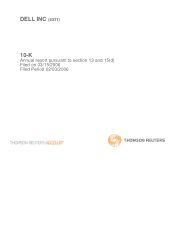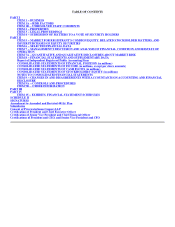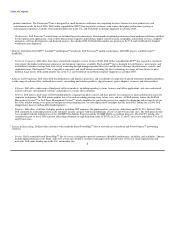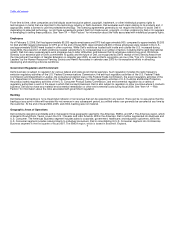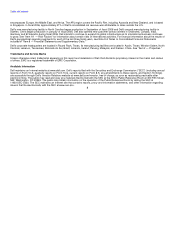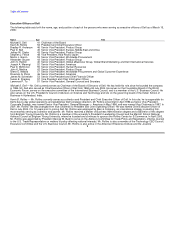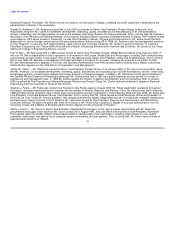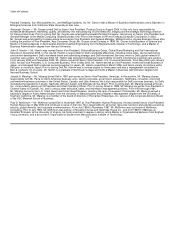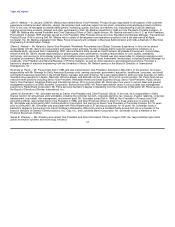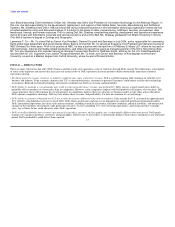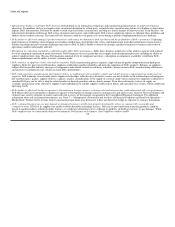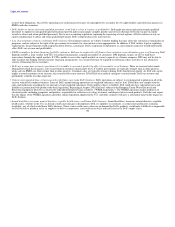Dell 2005 Annual Report Download - page 9
Download and view the complete annual report
Please find page 9 of the 2005 Dell annual report below. You can navigate through the pages in the report by either clicking on the pages listed below, or by using the keyword search tool below to find specific information within the annual report.
Table of Contents
However, Dell believes that the strength of Dell's direct business model, as well as its strong liquidity position, makes the company better
positioned than its competitors to continue profitable growth in any business climate. See "Item 1A — Risk Factors" for information about the
risks associated with competition.
Manufacturing and Materials
Dell manufactures most of the products it sells and has manufacturing locations worldwide to service its global customer base. See "Item 2 —
Properties" for information about Dell's manufacturing locations. Dell believes that its manufacturing processes and supply-chain management
techniques provide it a distinct competitive advantage. Its build-to-order manufacturing process is designed to allow Dell to significantly reduce
cost while simultaneously providing customers the ability to customize their product purchases. In addition, Dell purchases some of its products
from third-party original equipment manufacturers and resells them under the Dell name.
Dell's manufacturing process consists of assembly, software installation, functional testing, and quality control. Testing and quality control
processes are also applied to components, parts, and subassemblies obtained from third-party suppliers. Quality control is maintained through
the testing of components, subassemblies, and systems at various stages in the manufacturing process. Quality control also includes a burn-in
period for completed units after assembly, on-going production reliability audits, failure tracking for early identification of production and
component problems, and information from Dell's customers obtained through services and support programs. Dell is certified, worldwide, by
the International Standards Organization to the requirements of ISO 9001: 2000. This includes the design, manufacture, and service of
computer products in all Dell regions.
Dell purchases materials, supplies, and product components from a large number of suppliers. However, in some cases, multiple sources of
supply are not available. In other cases, Dell may establish a working relationship with a single source if it believes it is advantageous due to
performance, quality, support, delivery, capacity, or price considerations. Dell currently relies on Intel Corporation as a sole source supplier of
processors and Microsoft Corporation as a sole source for various operating system and application software products. These relationships and
dependencies have not caused material disruptions in the past, and Dell believes that any disruptions that may occur would not
disproportionately disadvantage Dell relative to its competitors. Also see "Item 1A — Risk Factors" for information about the risks associated
with sole source suppliers.
Patents, Trademarks, and Licenses
Dell holds a worldwide portfolio of 1,581 patents and had an additional 1,416 patent applications pending as of February 3, 2006. The
inventions claimed in those patents and patent applications cover aspects of Dell's current and possible future computer system products,
manufacturing processes, and related technologies. Dell anticipates that its worldwide patent portfolio will be of value in negotiating intellectual
property rights with others in the industry.
Dell has obtained U.S. federal trademark registration for its DELL word mark and its Dell logo mark. Dell owns registrations for 56 of its other
marks in the U.S. As of February 3, 2006, Dell had pending applications for registration of 32 other trademarks. Dell believes that establishment
of the DELL mark and logo in the U.S. is material to Dell's operations. Dell has also applied for or obtained registration of the DELL mark and
several other marks in approximately 180 other countries.
Dell has entered into a variety of intellectual property licensing and cross-licensing agreements. In addition, Dell has entered into nonexclusive
licensing agreements with Microsoft Corporation for various operating system and application software. Dell has also entered into various
software licensing agreements with other companies. 6

